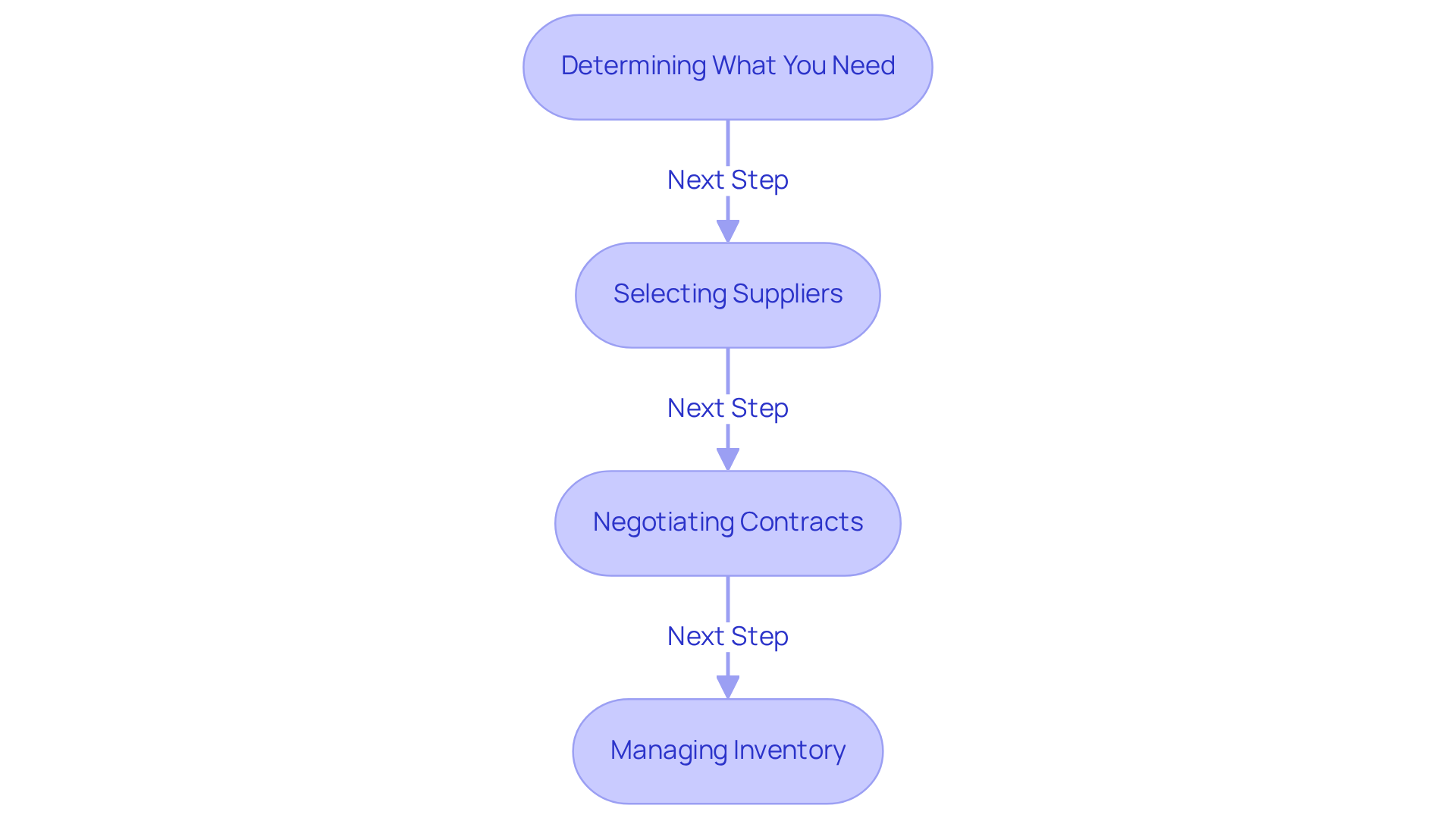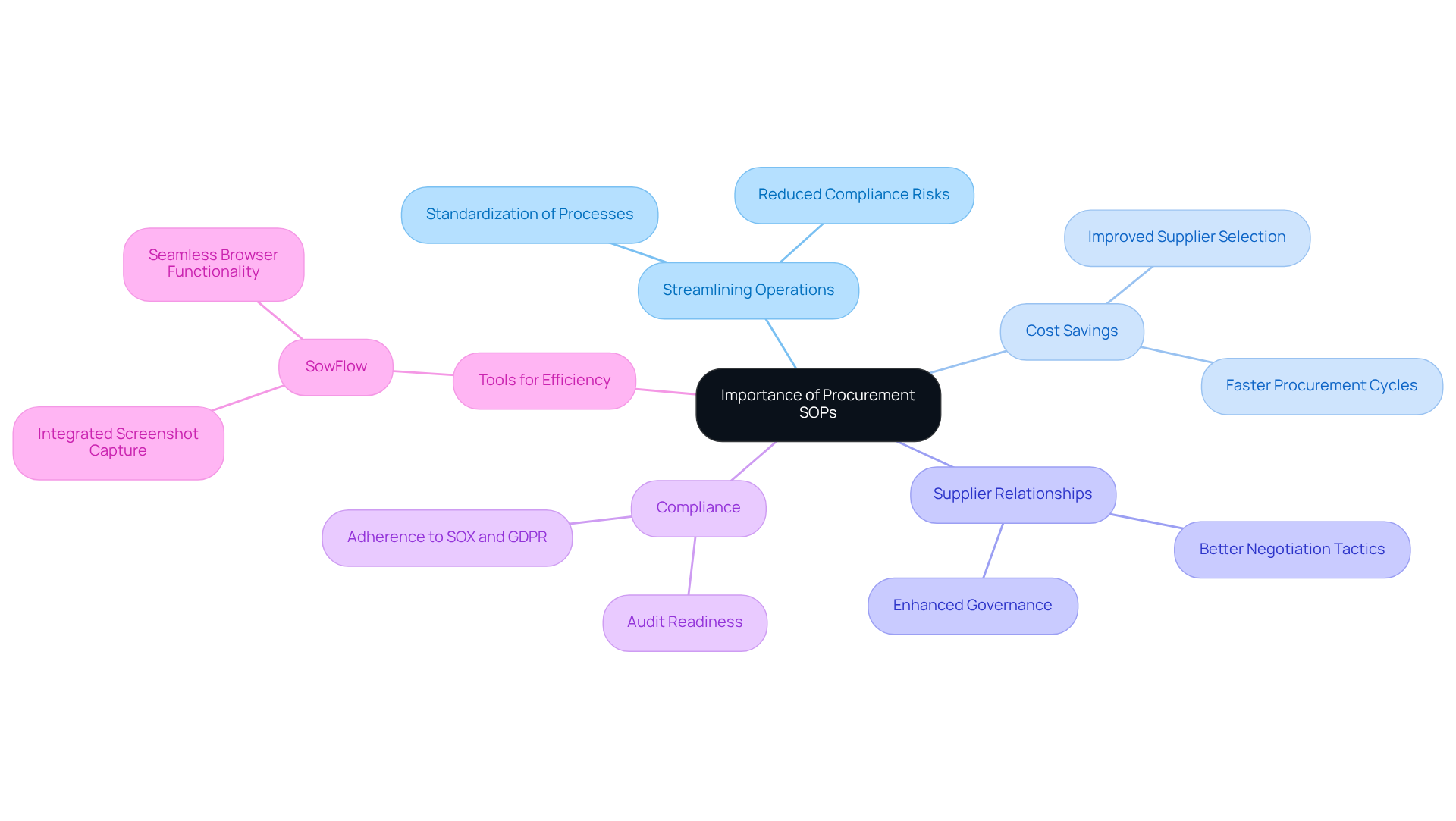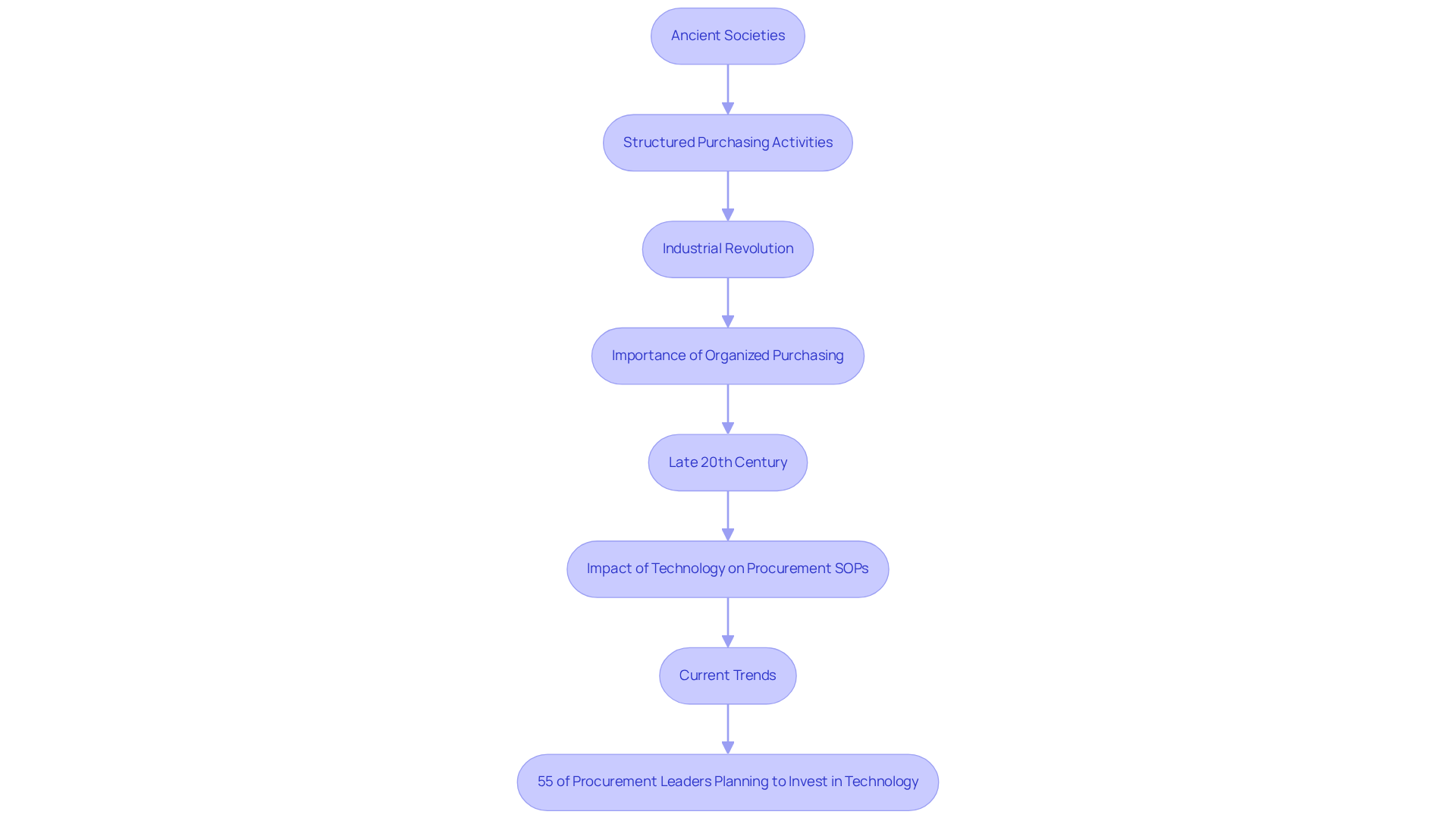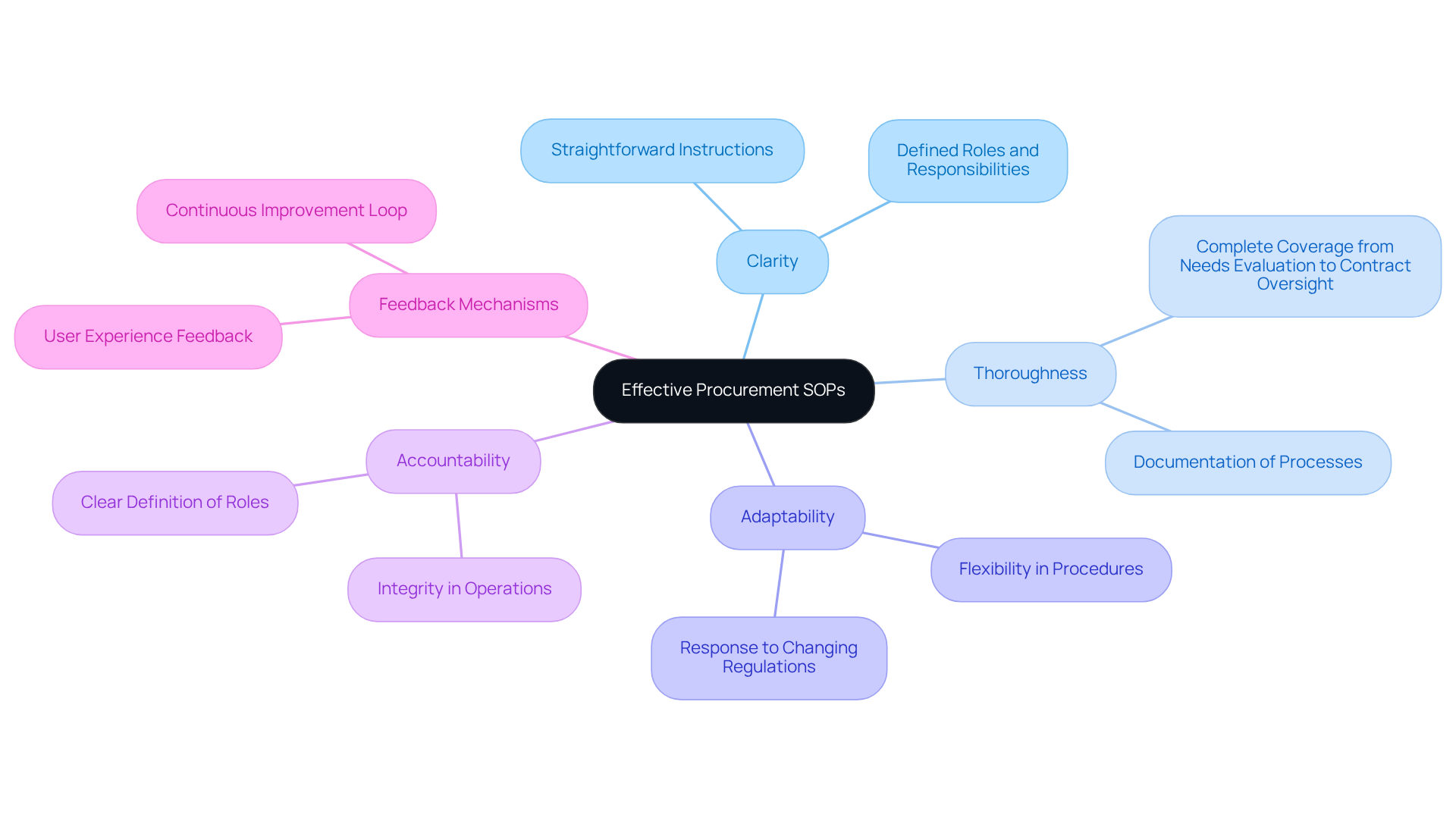
Scaling Businesses with Documentation
|
November 17, 2025
|
Understanding Procurement SOP: Importance, Origins, and Key Traits
Key Highlights:
- A procurement SOP is an official document that outlines the step-by-step guidelines for purchasing processes within a company.
- Key elements of a procurement SOP include determining needs, selecting suppliers, negotiating contracts, and managing inventory.
- The main goal of procurement SOPs is to ensure consistency, compliance, and efficiency in purchasing activities.
- Standardised procedures help reduce risks and enhance operational effectiveness, leading to fewer errors and improved productivity.
- Effective procurement SOPs can result in significant cost savings and better supplier relationships.
- Compliance with regulations like the Sarbanes-Oxley Act (SOX) and GDPR is crucial for protecting organisations from risks.
- The evolution of procurement SOPs has transitioned from simple administrative tasks to strategic frameworks enhanced by technology.
- Key characteristics of effective procurement SOPs include clarity, thoroughness, adaptability, accountability, and feedback mechanisms.
Introduction
You might be wondering why understanding procurement Standard Operating Procedures (SOPs) is such a big deal for organizations looking to boost their operational efficiency. Well, these structured guidelines do more than just streamline purchasing processes; they also help reduce risks and promote accountability within teams. But as businesses grow and encounter new challenges, what really makes an effective procurement SOP? And how can organizations tap into these traits for lasting success?
Let’s dive into the importance, origins, and key characteristics of procurement SOPs. You’ll see how they can truly transform business operations, especially in today’s competitive landscape.
Define Procurement SOP: Key Elements and Purpose
You might be wondering what a procurement SOP really is. Well, it’s an official document that lays out the step-by-step guidelines a company needs to follow as part of the procurement SOP. Think of it as your roadmap for navigating the purchasing process!
Key elements of a procurement SOP include:
- Determining what you need
- Selecting suppliers
- Negotiating contracts
- Managing inventory
Sounds straightforward, right? The main goal here is to ensure consistency, compliance, and efficiency in procurement SOP activities. This way, you can reduce risks and boost operational effectiveness.
By standardizing these procedures within the procurement SOP, companies can simplify their purchasing methods, cut down on errors, and ultimately enhance productivity. So, if you’re looking to streamline your procurement process, diving into the world of SOPs might just be the way to go!

Contextualize the Importance of Procurement SOPs in Business Operations
You might be wondering why the procurement SOP is such a big deal. Well, procurement SOP is essential for streamlining business operations and establishing a solid framework for purchasing activities. By clearly defining processes, these SOPs help organizations cut down on risks like compliance violations and supplier disputes, all while fostering a culture of accountability and transparency.
Now, let’s dive into the benefits! When companies implement effective procurement SOPs, they frequently experience significant cost savings. For example, organizations that stick to structured methods usually enjoy better supplier relationships and quicker procurement cycles. Did you know that companies with strong SOPs can achieve a high contract adherence rate? This not only boosts compliance but also enhances financial integrity.
Speaking of savings, improving supplier selection and negotiation tactics can lead to some serious financial wins. It’s clear that having standard procedures in place promotes operational efficiency and can really impact profitability. Real-world examples show that businesses adopting these procurement SOPs not only enhance their governance but also position themselves for long-term success in a competitive market.
And let’s not forget about compliance! Following regulations like the Sarbanes-Oxley Act (SOX) and the General Data Protection Regulation (GDPR) is crucial. These frameworks ensure that procurement practices meet legal standards, helping to protect the organization from potential risks.
Now, here’s something cool: tools like SowFlow have revolutionized the documentation workflow for teams. As Anastasia Masadi, a Product Owner, puts it, "SowFlow has been a game changer in the way we document work and deliver to our clients. I do not have to take each screenshot separately, and do not even have to leave the browser while I am creating SOPs and training materials. SowFlow gave me time from my life back."
This really highlights how SowFlow boosts efficiency and simplifies SOP creation with features like integrated screenshot capture and seamless browser functionality. It’s a must-have for operations managers looking to optimize their purchasing methods!

Trace the Origins and Evolution of Procurement SOPs
You might be wondering where buying methods actually started. Well, they trace back to ancient societies, where structured purchasing activities popped up alongside trade. Over the years, sourcing has transformed from a simple administrative task into a strategic powerhouse within organizations. Can you believe how far we've come? The Industrial Revolution was a game changer, as companies began to realize just how important organized purchasing methods were for managing supply chains effectively.
Fast forward to the late 20th century, and technology really shook things up. It led to the creation of procurement SOPs that incorporate best practices and meet compliance requirements. Today, these procedures are essential for navigating the tricky waters of global supply chains and regulatory environments. For example, a mid-sized manufacturing firm recently implemented a procurement SOP that simplified its supplier evaluation and selection process, cutting down lead times and boosting operational efficiency.
And here’s something to think about:
- 55% of procurement leaders are planning to ramp up their investments in supply chain management technologies in 2024.
That just shows how crucial technology is becoming in shaping procurement procedures. It’s all about keeping companies competitive and responsive to market demands. So, what do you think? Are you ready to explore how these changes can benefit your own operations?

Identify Key Characteristics of Effective Procurement SOPs
You might be wondering what makes effective procurement SOP procedures so crucial, right? Well, they really shine when they’re clear and concise. Think about it: straightforward instructions that are easy to follow can make a world of difference. In fact, studies show that organizations with explicit procedures can cut project delivery times by a whopping 30%! That’s a big deal when it comes to operational efficiency.
Now, let’s talk about thoroughness. Good procurement SOP should cover everything from the initial needs evaluation to the final contract oversight. It’s all about having a complete picture. And speaking of completeness, adaptability is key! Efficient procedures allow organizations to tweak their methods in response to changing regulations or market conditions, keeping them relevant and effective.
You know what else is important? Accountability. Clear procedures define roles and responsibilities within the procurement team as outlined in the procurement SOP, which is vital for maintaining integrity in operations. Plus, successful procurement processes include feedback mechanisms. This means they’re always looking to improve based on user experiences and outcomes. It’s like a continuous loop of enhancement that not only boosts the effectiveness of the procedures but also fosters a culture of collaboration and accountability within the organization. So, how can you ensure your procurement procedures hit all these marks?

Conclusion
You might be wondering just how important Procurement Standard Operating Procedures (SOPs) really are. Well, let me tell you - they're absolutely essential! Think of them as your trusty roadmap through the often tricky world of procurement. They help ensure that your purchasing processes are not only smooth but also meet all those pesky legal requirements. By laying down clear guidelines, companies can dodge risks, boost accountability, and ultimately pave the way for operational success.
Throughout this article, we’ve highlighted some key elements, like the importance of having a structured supplier selection process, nailing those contract negotiations, and always looking for ways to improve. It’s fascinating to see how procurement SOPs have evolved over time, shifting from simple administrative tasks to strategic tools that are crucial for today’s business landscape. Plus, with the rise of technology and tools like SowFlow, innovation is playing a huge role in making procurement processes more efficient.
In our fast-paced business world, having effective procurement SOPs is more important than ever. So, why not invest in these structured procedures? They can help you optimize your purchasing methods, strengthen those all-important supplier relationships, and set you up for long-term success. By embracing the principles we’ve discussed, you could see significant cost savings and improved operational integrity, giving your business the edge it needs to thrive in a competitive market. Remember, the journey toward procurement excellence starts with a commitment to developing and sticking to solid SOPs. So, are you ready to take that first step?
Frequently Asked Questions
What is a procurement SOP?
A procurement SOP (Standard Operating Procedure) is an official document that outlines the step-by-step guidelines a company must follow for the procurement process, serving as a roadmap for purchasing.
What are the key elements of a procurement SOP?
The key elements of a procurement SOP include determining what is needed, selecting suppliers, negotiating contracts, and managing inventory.
What is the main goal of a procurement SOP?
The main goal of a procurement SOP is to ensure consistency, compliance, and efficiency in procurement activities, helping to reduce risks and enhance operational effectiveness.
How does a procurement SOP benefit companies?
By standardizing procedures within the procurement SOP, companies can simplify purchasing methods, reduce errors, and ultimately enhance productivity.
👍
What others are liking
5 Steps to outline your ideal documentation structure
5 MINS READ
Where to start the your journey of mapping out your ideal documentation structure, aligning it with the very heartbeat of your organization?
Defining a winning level of detail in your process
3 MINS READ
What is too much detail, and what is too little? This article described in that winning level detail about what detail is enough.





